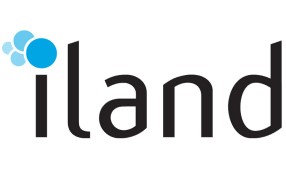
Comparing quotes and services from competing providers without a strong understanding of your business objectives and success parameters can quickly result in decision paralysis. Rushing the process risks ending up overpaying for unused resources or compromising on performance as a result of budget constraints. And that is the opposite of what the cloud is about.
Your “just right” cloud provider should deliver a service that fits your objectives like a glove. It should offer the right level of performance at the right level of investment. Below are ten key aspects to consider when conducting due diligence and selecting the provider that’s right for your business.
Global access and availability: laws, latency and location
When your data leaves your on-premise data centre, there are likely to be limitations on where it can go. Data that needs to be physically held by law in a specific geography means confirming with providers that they can accommodate this. Once you know where the data is, verify the location won’t create latency or bandwidth issues that negatively affect performance. Finally, check that the data centre location provides adequate distance between primary data and backup data in case you need to activate disaster recovery.
Cloud management
Once you have your cloud you need to manage it, but how straightforward will this be? You’ll want to know how easy the management interface is to use. If it is API/CLI-driven, do you need to allocate internal resources to manage it? Will training be required, and will the provider deliver this? What level of control and visibility is possible from the management interface into billing, performance and security?
Application performance
Analyse applications and determine where the balance between performance and budget lies for each. Mission-critical apps that need high performance and zero latency require more resources and therefore, expenditure. Lower priority apps used less frequently do not need the same level of guaranteed availability. This analysis is critical to hitting the custom-fit “just right” sweet spot and avoiding costly over-provisioning or performance-destroying under-resourcing.
Think about how the business might scale in future rather than requirements just now. Ask the provider how they’ll help you find the balance between performance and cost. Is application licensing based on core CPU count? If so, can the provider offer server blades with fewer CPU cores to match the license core count. It avoids paying for redundant resources.
Security and compliance
Cloud today is generally accepted as offering robust security and compliance. As the environment matures and regulations intensify, customer requirements become more nuanced, meaning the standard security provision may not be sufficient.
Find a provider that is as expert – if not more so – on the regulations and restrictions that your business must comply with as you are. Data sovereignty, industry-specific regulations and general data protection issues are complex. You should be seeking a provider that can offer a consultative service so you can evolve together to ensure long-term security and compliance.
Data Back-up and Disaster Recovery
Not all cloud providers include data backup in their basic cloud service. Some bolt it on for an extra cost. That can come as an unwelcome surprise when you think you’re getting the whole package. Check what backup capabilities the provider offers – both full and incremental – and whether they are safely located.
The same goes for disaster recovery, and this is a key part of supplier due diligence. Do they have a second data centre for disaster recovery? Is it far enough away from the primary site to be unaffected by a physical interruption there?
Connectivity and networking
When assessing connectivity and networking impacts, it’s important to understand what skills you have in-house. Are there any deficits that will cause your team difficulties? Do you understand your business requirements and what the cloud service provider’s capabilities are? For example, many organisations have advanced network topologies that require the usage of specific carriers, virtual or physical equipment, co-location and software-defined network options.
Strategy and planning
Central to meeting business objectives is the question of whether applications are suited to the cloud IaaS you are planning to adopt. This comes with a raft of sub-questions, such as what CPU, memory, storage and bandwidth will they need. Can they be suitably backed up to achieve the required RPO/RTO objectives?
It can be useful to seek providers’ support to cover all these angles for all your applications and develop a strategy. This avoids allocating an internal resource or a third-party consultant to get all this information and interpret it into a migration strategy.
Onboarding and deployment
When it comes to pushing the button on your cloud deployment, will you be doing it yourself, or being supported by your provider? Different providers offer varying levels of support. These range from DIY to a full concierge onboarding and migration service, at different prices.
It’s vital to know where you are on that scale and how much or little in-house resource is needed. Your choice might depend on how much appetite there is for the inherent risks of migration, such as application downtime. If appetite is low, you’re going to want a provider who can guarantee that data is moved on time, with minimal risk.
Support
What level of support will you need? How much internal resource do you have? How much might you need to draw on your provider? All providers are not the same. Most offer a basic support package, but anything beyond that comes at an extra cost.
As the world moves to increasingly diverse working hours due to the effects of the COVID-19 pandemic, 24/7 support is going to become more critical. You want to have visibility into that before you make the leap.
Pricing/Billing
Cost visibility is one of the oft-touted benefits of the cloud. It is frustrating that pricing and billing can often be so obscure and variable. During the due diligence process, ask to see a sample billing statement broken down by line item. Make sure you delve into the pricing variables in the service, whether it is all-inclusive or what extra charges you might incur.
Ultimately, moving to the cloud is all about removing the overhead and limitations of on-premise infrastructure. All the factors discussed above might seem like a huge amount to consider. However, when you look at the strategic benefits and value that a cloud strategy delivers to the business, spending time to get your cloud “just right” is well worthwhile.
It soon becomes clear that all IaaS providers are not the same. Take the time to conduct robust due diligence of providers and drill into precisely what they offer. It reduces the chance of the business, making a decision that causes problems in the long term.
iland is a global cloud service provider of secure and compliant hosting for infrastructure (IaaS), disaster recovery (DRaaS), and backup as a service (BaaS). It is recognised by industry analysts as a leader in disaster recovery. The award-winning iland Secure Cloud Console natively combines deep layered security, predictive analytics and compliance to deliver unmatched visibility and ease of management for all of iland’s cloud services. Headquartered in Houston, Texas and London, UK, iland delivers cloud services from its data centres throughout the Americas, Europe, Australia and Asia.


























